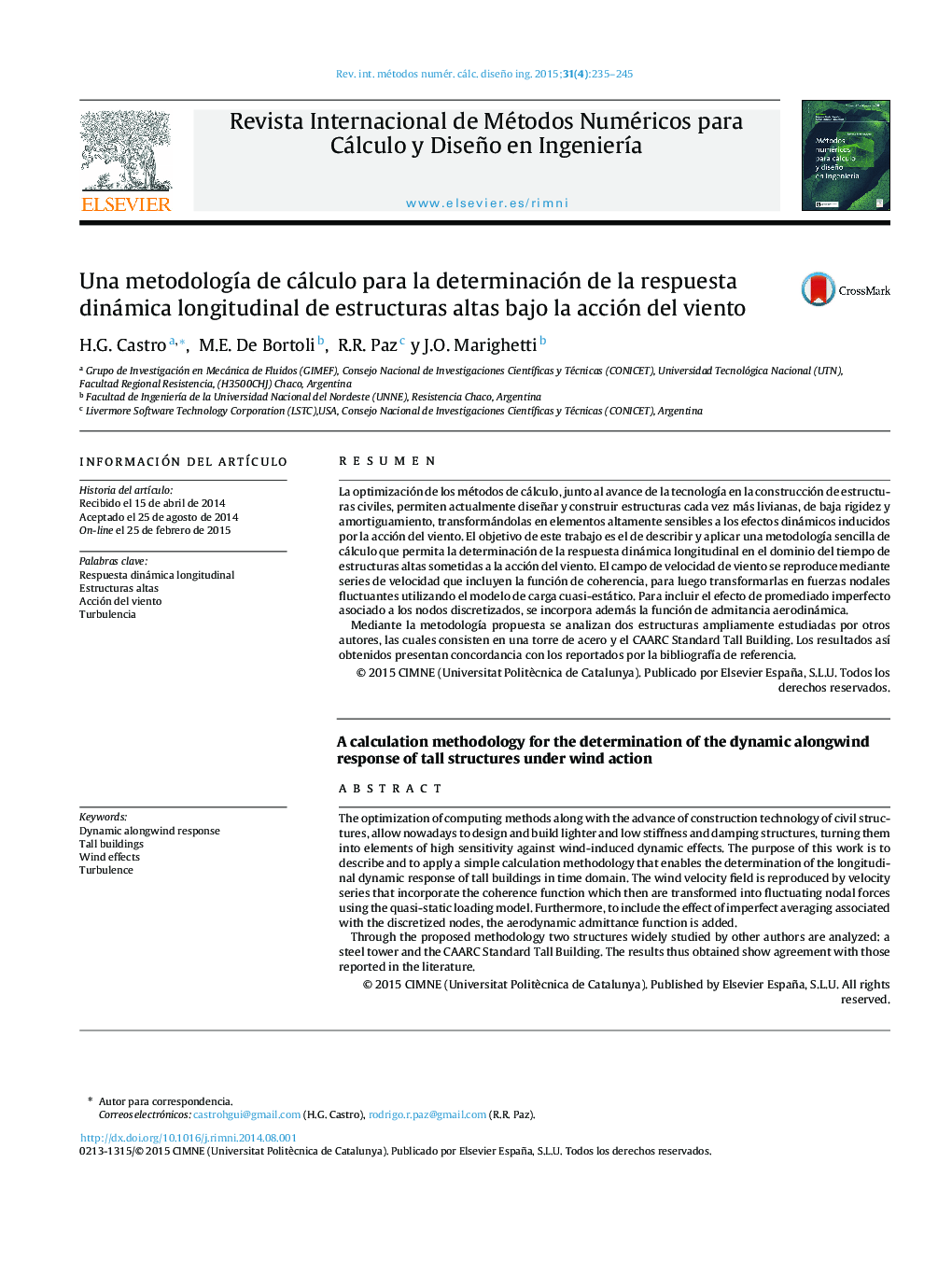| کد مقاله | کد نشریه | سال انتشار | مقاله انگلیسی | نسخه تمام متن |
|---|---|---|---|---|
| 1702528 | 1012337 | 2015 | 11 صفحه PDF | دانلود رایگان |
ResumenLa optimización de los métodos de cálculo, junto al avance de la tecnología en la construcción de estructuras civiles, permiten actualmente diseñar y construir estructuras cada vez más livianas, de baja rigidez y amortiguamiento, transformándolas en elementos altamente sensibles a los efectos dinámicos inducidos por la acción del viento. El objetivo de este trabajo es el de describir y aplicar una metodología sencilla de cálculo que permita la determinación de la respuesta dinámica longitudinal en el dominio del tiempo de estructuras altas sometidas a la acción del viento. El campo de velocidad de viento se reproduce mediante series de velocidad que incluyen la función de coherencia, para luego transformarlas en fuerzas nodales fluctuantes utilizando el modelo de carga cuasi-estático. Para incluir el efecto de promediado imperfecto asociado a los nodos discretizados, se incorpora además la función de admitancia aerodinámica.Mediante la metodología propuesta se analizan dos estructuras ampliamente estudiadas por otros autores, las cuales consisten en una torre de acero y el CAARC Standard Tall Building. Los resultados así obtenidos presentan concordancia con los reportados por la bibliografía de referencia.
The optimization of computing methods along with the advance of construction technology of civil structures, allow nowadays to design and build lighter and low stiffness and damping structures, turning them into elements of high sensitivity against wind-induced dynamic effects. The purpose of this work is to describe and to apply a simple calculation methodology that enables the determination of the longitudinal dynamic response of tall buildings in time domain. The wind velocity field is reproduced by velocity series that incorporate the coherence function which then are transformed into fluctuating nodal forces using the quasi-static loading model. Furthermore, to include the effect of imperfect averaging associated with the discretized nodes, the aerodynamic admittance function is added.Through the proposed methodology two structures widely studied by other authors are analyzed: a steel tower and the CAARC Standard Tall Building. The results thus obtained show agreement with those reported in the literature.
Journal: Revista Internacional de Métodos Numéricos para Cálculo y Diseño en Ingeniería - Volume 31, Issue 4, October–December 2015, Pages 235–245
